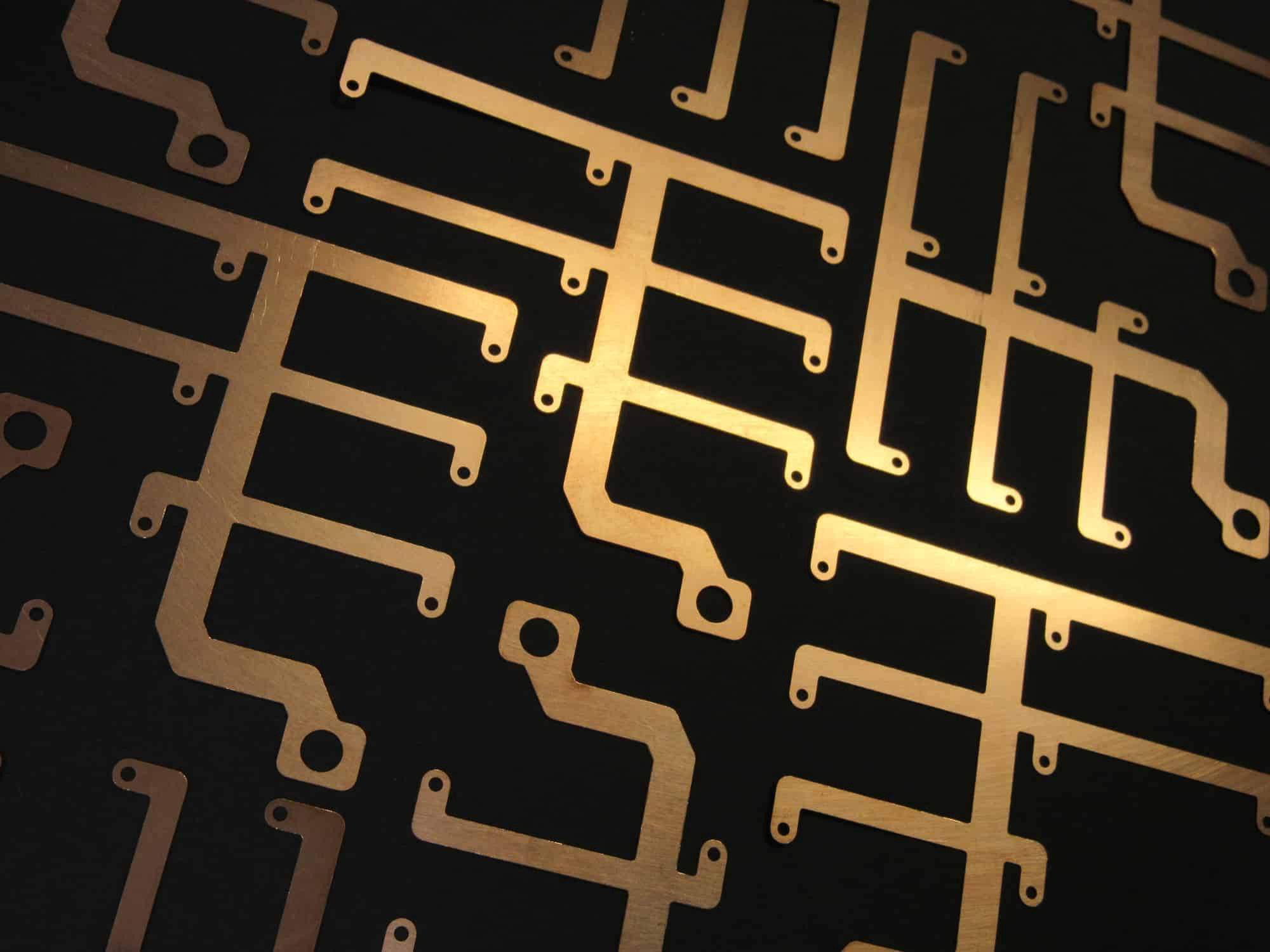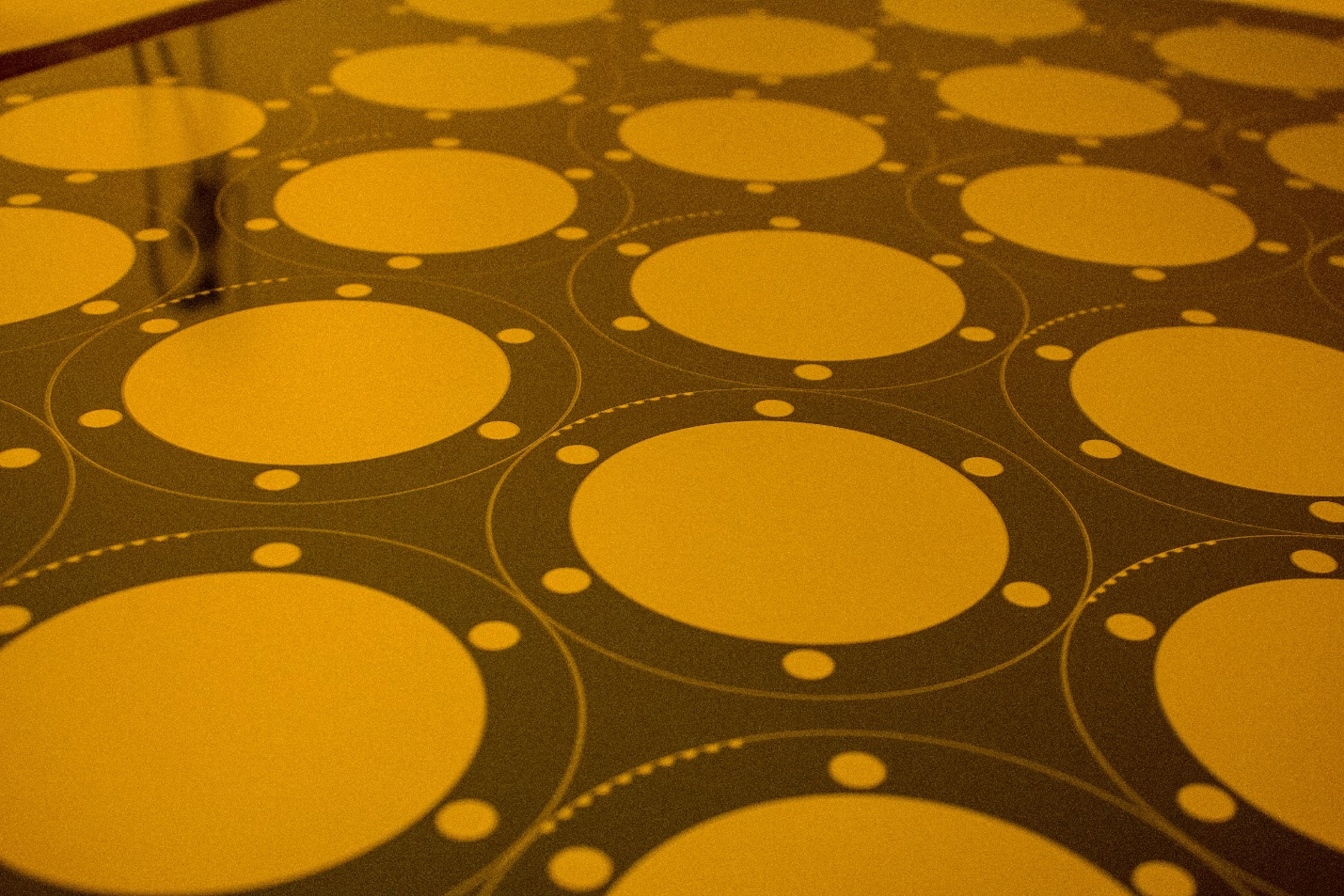Chemical etching is revolutionizing the way design engineers tackle complex machining processes in a way that no machining process has ever done before. This ancient process equipped with the technologies of the 21st century. And offers unique benefits and unprecedented flexibility. Therefore, it has become the preferred choice of most designers and engineers.
Chemical etching uses an acidic etchant, usually Ferric Chloride, to dissolve areas of the metal, creating the required geometry. It produces intricate designs without inducing any damage to the metal used.

Judging by the popularity that chemical etching is gaining among modern design engineers, we have shaped this article as a design guide for the engineers and designers who want to explore chemical etching for their design projects.
Chemical etching is a machining process that promises high repeatability and works to produce tight-tolerance products.
Moreover, the process of chemical etching begins with etchers coating the sheet of metal with an etchant-resistant layer. Then, they scratch the design that they have to etch on the metal through the resistant layer. Scratching exposes the metal underneath to the acidic etchant.
The acid dissolves the parts of metal that it comes in contact with, thereby creating the required design.
Because the thickness of the cutting tool and the tampered edge of the cutter does not restrict the precision of this process. Hence it is capable of working within extremely tight tolerances.
It is an etchant that lends chemical etching its name. Hence, an etchant is the most critical part of the chemical etching process.
An etchant is a chemical that has a low pH; hence, it is an acidic solution. Being acidic, etchants are naturally corrosive to metals. Thus, during the process of etching, when they come in contact with the metal surface, they erode and remove them. And create the design in the shape of the exposed metal.
Hydrochloric acid, Nitric acid, and Sulfuric acid are some of the most common acidic solutions that find use in etching. However, there are powdered chemicals too, like Ferric Chloride and Copper Sulfate, which form acid with water. And act as etchants in the process.
We mentioned in the beginning how the innovations of the 21st century support the chemical machining process. These innovations have divided chemical etching into two categories. These are photochemical etching and manual etching.
Let’s talk about manual etching first. Because, well, it came first.
Manual etching begins with the etcher coating the metal sheet with an acid-resistant material called waxy ground.
In addition, the etchers scratch the waxy ground in the shape of the required design, exposing that area to the acid, and dip the metal sheet into an acid bath. The etchant dissolves the area that the scratched ground exposes and creates the required design.
Once the process is complete, the etchers clean the metal of the waxy ground.
The process of photochemical etching is the latest innovation in the chemical machining process. This process blends radiation technology and etching chemistry to create designs that are sharp, precise, and highly accurate.
Photochemical etching uses a layer of polymeric lamination that covers the metal sheet. This lamination is a photoresist film.
If the process uses a negative photoresist film, the etchers mask the etching area using a design printed on a polymeric sheet. Then they put the laminated metal sheet under UV rays.
The UV rays alter the chemical composition of the exposed photoresist film, making it insoluble against the developer. After being encountering UV rays, the etchers coat the metal sheet with a developer. The developer dissolves the photoresist film from the unexposed, masked area of the metal.
After the photoresist film dissolves, it leaves behind the raw metal. Thus, the sheet of metal is sprayed with an acidic etchant. The etchant does not affect the area covered with photoresist film while it dissolves the raw metal and creates the required design.
Once the metal is properly etched, the photoresist film from the metal sheet is removed and the metal sheet is sent ahead for finishing.
One of the reasons why chemical etching is so popular among design engineers is the flexibility that it offers in terms of material selection.
This process is also suitable for a wide range of materials ranging from ferrous to non-ferrous metals and glass. From soft metals like Aluminum to hard ones like titanium and even high melting alloys like Inconel.
Following are some of the most commonly used materials in chemical etching:
Glass is a soft amorphous solid. Chemical etching is the preferred process for producing etched glass. This process plays a vital role in creating design and frosted glasses.
Chemical etching steel is a viable option because etchants do not alter the properties of materials and steel retains its inherent strength and corrosion-resistance even after etching has shaped an intricate design out of it.
Aluminum, because of its inherent softness and low melting point, is often difficult to machine with processes involving heat, such as laser etching.
Chemical etching provides a great alternative to the conventional etching and machining process for making markings on an Aluminum sheet.
Nickel and all of its alloys have a high melting point. Therefore, chemical etching is a viable alternative to machining nickel and its alloys as it allows for precise machining, rapid prototyping and incurs no additional cost because of nickel’s high melting temperature.
Copper has high thermal conductivity and is highly reflective. Therefore, it may be susceptible to sustaining thermal damage when exposed to high-heat involving processes like laser etching.
Therefore, chemical etching is the go-to way for etching designs on copper as this process retains the integrity of the material while ensuring the design quality of the end product.
Titanium is highly corrosion-resistant, features unmatched tensile strength, and shows stability at high temperatures. However, it is often looked at as an ideal candidate for chemical etching because it allows intricate parts to be made out of it without showing a reduction in its performance in a given application.
Chemical etching also offers a lot of benefits over its counterparts when it comes to machining complex designs on a wide range of metals. Here are some of the reasons why design engineers often prefer this process for machining simple and complex designs:

Chemical etching features the capability of machining meticulous designs within very tight tolerances. A typical chemical machining process etches metals within 10% of the thickness of metal, with the metal's thickness ranging from 0.25 to 1.5 mm.
Moreover, chemical etching also offers engraved features that are needed in many industrial applications with the minimum feature size being around 0.1 mm.
While other processes offer better tolerance, chemical etching is still preferred because they have a smaller feature size cut-off value and can create sharp and intricate designs with ease.
Many machining processes lead to the formation of burr on the metal surface and hence call for a burr-removal process after machining. The need for a post-process treatment not only adds to the overall project cost but also increases the project lead time.
The process does not involve any mechanical or thermal stress, hence does not lead to burr-formation. So, it ends with a smooth-finished product and eliminates the need for any post-process treatments.
Chemical etching provides unprecedented freedom to design engineers when it comes to creating complex designs. It allows them to create intricate and meticulous designs because the precision of the markings is not bound by the size of the cutting tool.
Moreover, the tooling for chemical etching is all digital and the price of tooling does not increase with the level of complexity. Therefore, it is affordable and easily modifiable, thereby making it easier for turning a dreamy design into an intricately crafted reality.
Chemical Etching features rapid prototyping because of digital tooling and prompt production. It offers good repeatability and unmatched precision. And all these factors come together to make chemical etching an economical process.
Moreover, it requires no special tooling for complex designs, all the alterations and modifications are digital and the final product, with perfect specifications, is what comes out as a result.
Chemical etching, with its unprecedented flexibility of material selection and its capability to tackle complex designs with ease and precision, has led to the creation of designs that the engineers of the last century could only dream of.
Also, its cost-efficacy and smooth surface finish make it a preferred choice for most designing processes.
Chemical etching can also work on a wide range of metals and allow these materials to retain their properties. Which makes it a viable machining option for countless applications.
